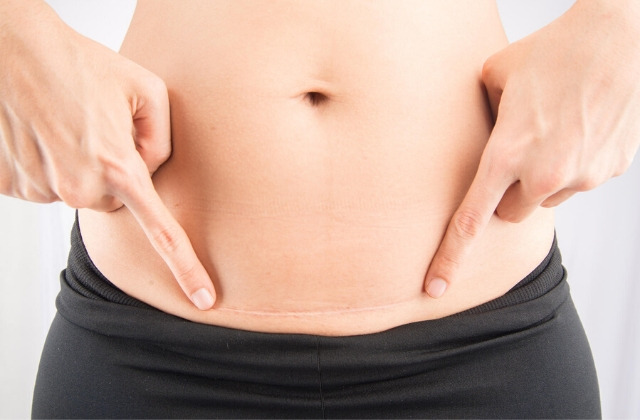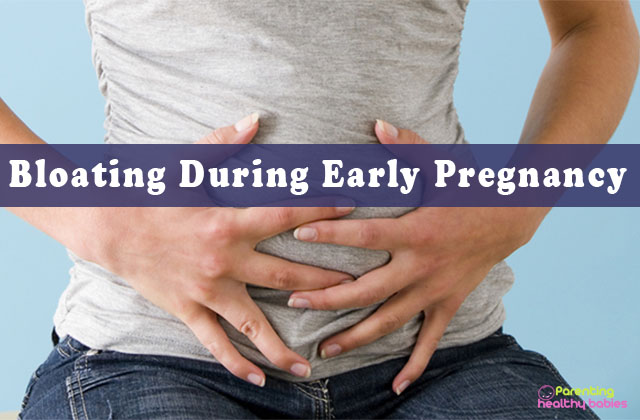Blood loss is an unavoidable condition during and after childbirth, more so during a c-section. Although some bleeding is normal, it helps to know what to expect and when bleeding after c-section requires a doctor’s attention. Causes of bleeding after c-section are severed blood vessels, uterine atony, placenta fragments and placenta accreta.
In This Article:
- Possible Cesarean Delivery Complications
- Risk Factors for Cesarean Delivery Complications
- Signs of Internal Bleeding After a C-Section
- Does it Affect Future Pregnancies?
- Things to Make Sure About Bleeding After C-Section
- When to Call the Doctor?
All You Need to Know about Internal Bleeding After C Section
Possible Cesarean Delivery Complications
Some possible complications of cesarean deliveries are –
- Post-Surgery infection or fever
- Too much blood loss
- Injury to organs
- Emergency hysterectomy
- Blood clot
- Reaction to medication or anesthesia
- Emotional difficulties
- Scar tissue and difficulty with future deliveries
- Death of the mother
- Harm to the baby
Fortunately, serious complications from cesarean deliveries are rare. In developed countries, maternal death is very rare. Death of the mother is more likely for women with a cesarean delivery than for women with a vaginal delivery but this is probably related to complications with the pregnancy that make a cesarean delivery essential.
Risk Factors for Cesarean Delivery Complications
Many complications of cesarean delivery are unpredictable and very rare but there are some things and risk factors that make complications more likely which are –
- Obesity
- Large infant size
- Emergency complications that necessitate a cesarean delivery
- Long labor or surgery
- Having more than one baby
- Allergies to anesthetics, drugs or latex
- Maternal inactivity
- Low maternal blood cell count
- Use of an epidural
- Premature labor
- Diabetes
Signs of Internal Bleeding After a C-Section
Some common signs of internal bleeding after a c-section are –
Rapid Heartbeat and Difficulty Breathing
Tachycardia or rapid heartbeat over 100 beats per minute is a classic sign of internal bleeding and hypovolemic shock. Because the blood volume drops, blood pressure is less than 90 mm Hg systolic. Breathing becomes rapid and gasps with respiration of 22 minute or more.
A Boggy Uterus
After delivery by c-section, all women are given a medication called oxytocin to help the uterus contract and stay firm, so bleeding doesn’t occur. If the uterus loses its tone and becomes flabby it’s known as uterine atony or a boggy uterus and large amounts of internal bleeding can occur rapidly. For this reason, the uterus is felt manually through the abdomen every hour or so for the first few hours after delivery.
Weakness and Severe Anxiety
A lot of women experiencing internal bleeding may complain of weakness or may even pass out, especially if trying to stand up. Feelings of anxiety and an impending sense of doom are common signs during internal bleeding.
Pale and Cold Body
Internal bleeding can make the women very pale. Hands and feet may be cold and clammy, the woman may be very sweaty
Heavy Vaginal Bleeding
Because the cervix is soft and often somewhat dilated or open even after a planned cesarean delivery, blood can escape through the vagina. Women having cesarean sections still had vaginal bleeding called lochia, from the placental site after delivery. If bleeding becomes heavier than normal, saturating a pad an hour or if large clots are passed, however, internal bleeding should be considered.
Reduced Urine Output
Because blood flow to the kidneys is reduced, urine output may fall to less than 30 ml per hour. Most women have a foley catheter inserted for a cesarean delivery for bladder emptying and the urine output is checked every hour for the first few hours after delivery.
Does it Affect Future Pregnancies?
Some cesarean delivery complications like hysterectomy make it impossible for a woman to have another baby. However, even if the surgery goes well and the mother heals, she may have difficulties with pregnancy in the future. This can happen because of scar tissue at the site of the cesarean delivery. In some cases, cesarean delivery scarring can connect the uterus to the bladder. When they are connected, future cesarean deliveries are more likely to damage the bladder. Future pregnancies may also implant in dangerous areas like the cesarean delivery scar.
Things to Make Sure About Bleeding After C-Section
Here are some things should be kept in mind about bleeding after cesarean delivery –
- Breastfeeding – it can help lighten some of the bleeding after a c-section, as the uterine muscles and blood vessels tend to contract during breastfeed. Hence, the blood loss decreases due to the release of oxytocin.
- Physical activity – physical stress and intense activity can increase the bleeding after c-section, so, limit any physical work like high-intensity exercise, lifting heavy objects etc. and take proper rest to recover quickly.
- Effectively relieve pain – avoid taking any medication without doctor’s approval. Apply a warm compress to the abdomen to relieve pain, if it persists consult the doctor.
When to Call the Doctor?
If the bleeding becomes heavy again, after tapering off and the colour turns red it may be due to overexertion. However, if clotting continues even after resting for a few days, it might be due to some complications. Call the doctor immediately if –
- Using up a pad or more every hour
- The clotting continues
- Feeling dizzy or nauseous
- Pulse is more than 100
- Blood pressure is less than 90 systolic
Conclusion
Adequate postnatal care is important for both mother and baby. Make sure to take rest and avoid exerting to avoid complications. Consult the doctor if there are signs of ill-health.
Sources:
- https://www.hellomotherhood.com/78295-reasons-spotting-pregnant.html
- https://www.ncbi.nlm.nih.gov/pmc/articles/PMC4460432/













